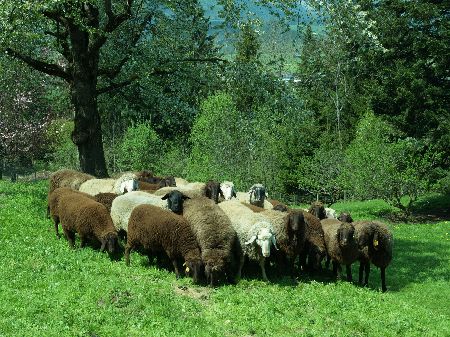Mycoplasma agalactiae is the causative agent of contagious agalactia in small ruminants (sheep, goats). Usually there is a subclinical udder inflammation with a decrease in milk production, more rarely also inflammation of the joints or conjunctiva (conjunctivitis).
The present experiment aims to investigate the clinical effects, infection mechanisms, pathogenicity, immune defense mechanisms and genetic variations of M. agalactiae in sheep in vivo. For experimental reasons, the sheep should lamb at a time that is as consistent as possible. This is accomplished through hormonal estrus synchronization. As part of the planned experiment, 8 female, newly lactating sheep are to be infected intramammarily with M. agalactiae. Another 8 sheep serve as control animals.
Over a period of 3 weeks after infection, the sheep are milked at the HBLFA Raumberg-Gumpenstein, and milk production and corresponding performance parameters are recorded. Clinical parameters such as internal body temperature and breathing as well as food intake are recorded daily. The regularly taken blood samples and aseptically taken milk samples create the basis for the subsequent specific biomedical laboratory tests regarding the infection and defense mechanisms of M. agalactiae.
After the clinical examinations have been completed, the sheep are subjected to a necropsy at the Institute of Pathology at the University of Veterinary Medicine in Vienna, with further tissue examinations then being carried out.
The pathological-histological examinations as well as investigations into the genetic structures of the surface proteins are carried out by the cooperation partner at the Institute of Microbiology, Mycology and Animal Hygiene at the University of Veterinary Medicine. The results of the research project applied for provide an essential basis for understanding immunological processes and thus form the basis for future vaccine production.







